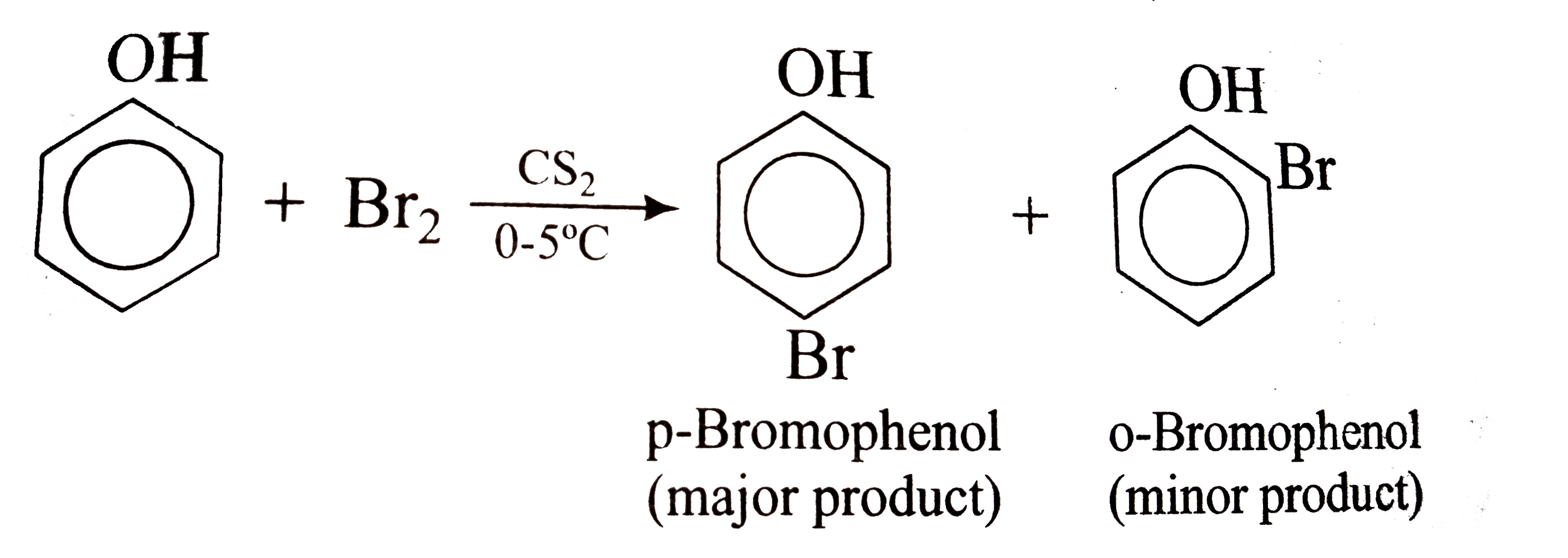Phenol reacts with bromine in carbon disulphide at low temperature to give
A
2,4,6−tribromophenol
B
m−bromophenol
C
o− and p−bromophenol
D
p−bromophenol
Video Solution
Text Solution
The correct Answer is:C
Reaction can be limited to monohalogenation if halogenation is carried out in non polar solvant like CS2, CCl4 or in a solvent of low polarity such as CHCl3 at a low temperature

In nonpolar solvents or solvents of low polarity phenol does not ionize to yield phenoxide ion. Therefore, electophile Br+ has no option but to attack the less active benzene ring of phenol.
|
Topper's Solved these Questions
- ALCOHOL, PHENOL AND ETHERSBOOK - R SHARMACHAPTER - ALCOHOL, PHENOL AND ETHERSEXERCISE - Follow -Up Test -12
14 Videos
- ALCOHOL, PHENOL AND ETHERSBOOK - R SHARMACHAPTER - ALCOHOL, PHENOL AND ETHERSEXERCISE - Follow -Up Test -13
15 Videos
- ALCOHOL, PHENOL AND ETHERSBOOK - R SHARMACHAPTER - ALCOHOL, PHENOL AND ETHERSEXERCISE - Follow -Up Test -10
12 Videos
- AMINESBOOK - R SHARMACHAPTER - AMINESEXERCISE - Archives
36 Videos
Similar Questions
Knowledge Check
Aniline reacts with bromine in CS2 [carbon disulphide] at room temperature to yield .
A2,4,6-tribromoanilineBo-bromoanilineCp-bromoanilineDA mixture of (2) and (3)Phenol reacts with bromine in chloroform at low temperature to give
Am-bromophenolBmixture of ortho and para bromophenolCp-bromophenolD2,4,6-tribromophenolPhenol reacts with bromine in chloroform at low temperature to give
Am-bromophenolBMixture of ortho and para bromophenolCp-bromophenolD2,4,6-tribromophenol
When phenol reacts with bromine in CS2 at a low temperature, the product is :
View SolutionPhenol reacts with bromine is CS2 to give :
View SolutionPhenol reacts with bromine in H2O at high temperature to give
View SolutionPhenol reacts with aqueous bromine to give :
View SolutionPhenol on treatment with bromine water gives
View Solution
